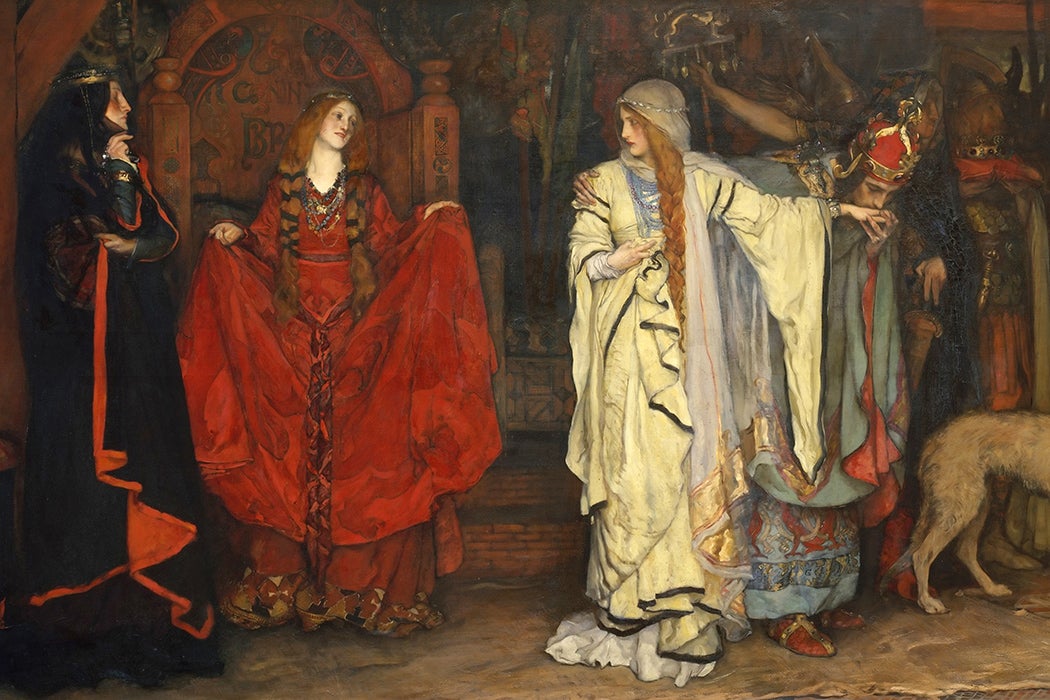In the eighteenth and early nineteenth centuries, theater-going was rough stuff. As popular culture historian M. Alison Kibler explains, “[S]pectators regularly interrupted performances, demanded actors repeat a favorite scene, and reacted violently to any condescending or aristocratic performer.” There was the 1834 anti-abolitionist riot at the Bowery Theatre in protest of an “English actor who had insulted the American flag.” And there was the infamous Astor Place Opera House riots of 1849, which saw twenty-two people dead and 150 injured.
But by the late nineteenth century, theater owners and managers put their collective feet down and “began to silence their audience’s traditional combativeness, reduced prostitution at theaters, and encouraged middle-class women and children to attend.” They also discouraged distractions such as whistling and stomping, anything that would paint theater as anything but an upright and moral outing. And for the most part, it worked. But as Kibler points out, there were two big exceptions that “illustrate that among the more polite spectators, pockets of unruly audiences still remained in the early twentieth century.”
The two exceptions—riots, actually—took place just nine days apart. The first hit the Hyperion Theatre in New Haven on November 18, 1911. There was a Yale University football game that day, and, fearing a rowdy after-game crowd, the city’s police censor contacted the theater manager. The play—Gaby Deslys’s Vera Violett—was raising eyebrows with its risque dancing, and the censor feared that it would simply be too much for the expected audience. The solution? The theater cut it short, omitting the racy parts and ending the play early without explanation. In response, writes Kibler,
Yale students ripped up the chairs and broke the stage footlights and other decorations in the theater. They then rushed the stage, tried to bring up the curtain, and fought with the stagehands, who responded by turning fire hoses on the audience.
More students arrived, pouring out from a nearby dorm, and started throwing rocks. News reports at the time noted that 800 men were involved in the riot, and six were arrested. Among those arrested was Lewis E. Bomeisler, Jr., a Yale student and brother of the university’s star player. The arrest turned violent as “Lewis was clubbed on the head by policemen attempting to control the mob.”
The next day, all of the arrestees were released, and the Yale students, backed by a dean, demanded an apology. The students also took exception to the fact that the play was cut short without warning and at full ticket prices. They got their apology, with the theater manager writing, “I freely admit that the entire force lost their heads […] The Hyperion owes the Yale students a deep apology.” That wouldn’t be the last (it wasn’t even the first) Yale theater riot, though, Kibler notes. Fire hoses were used again during a 1914 riot, and in 1916, the fire department was called in to calm disruptive students.
Not even two weeks after the Yale events, The Playboy of the Western World opened in New York City. Its reputation had preceded it. When it debuted in Dublin in 1907, “Irish nationalists rioted because they objected to the ‘un-Irish’ aspects of the play,” Kibler writes. When the play made its way across the Atlantic to America, there were protests at many of its tour stops. The police censor stepped in again when Playboy came to New Haven, ordering cuts to be made. But it was during its New York stop that things escalated rapidly.
The Rowdy Women of Early Modern Theater
By curtain time, there was already a heavy police presence as protesters had threatened to disrupt the show. The first act saw some heckling from the crowd, including from a man who stood up and declared it “an outrage on human nature, as an American citizen and an Irishman.” Then, as the New York Times reported, a storm of vegetables rained down on the performers and “made the actors duck their heads and fly behind the stage setting for shelter.” Seven people were arrested.
The reactions to the events were very different. Irish leaders even used the disparities as talking points, noting that the Yale riots were “not treated as negatively as the Playboy riots.” In addition, they argued, Playboy protesters were fighting against immorality, “not fighting for more illicit sexuality, as the Yale students did.” There was no apology given to the Playboy rioters.
Though both events struck vastly different chords, both had a hand in challenging the era’s anti-obscenity laws. As Kibler writes, “[they] were both part of a broad conversation about literary value, ‘freedom of the theatre,’ and audience authority […] reveal[ing] the surprising legacy of restless audiences in the history of American censorship.”








